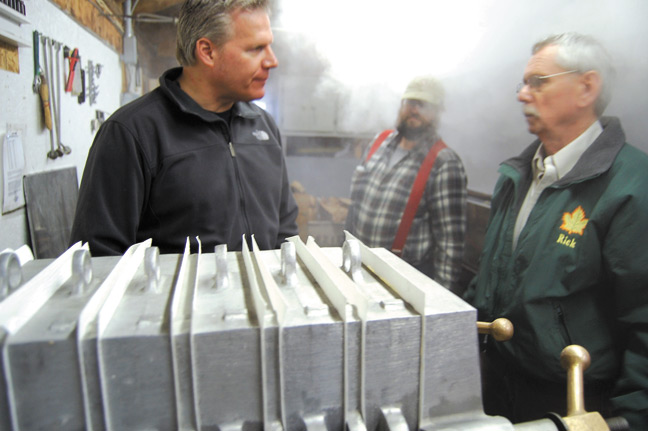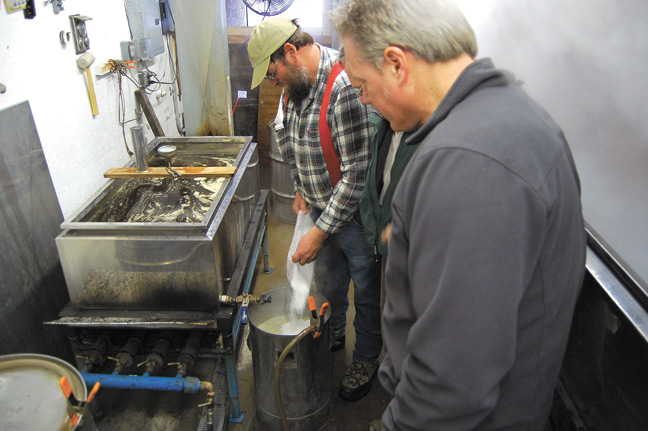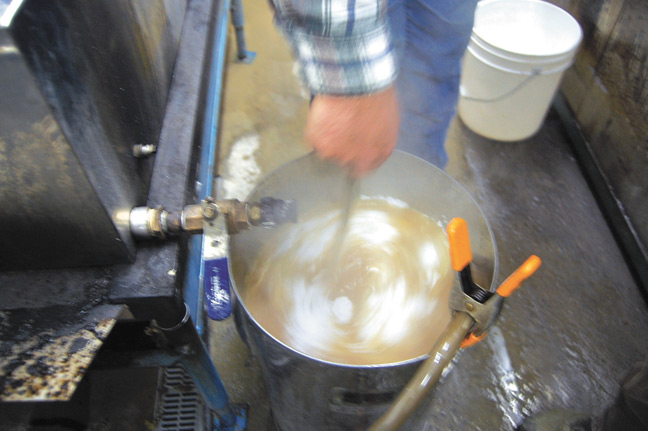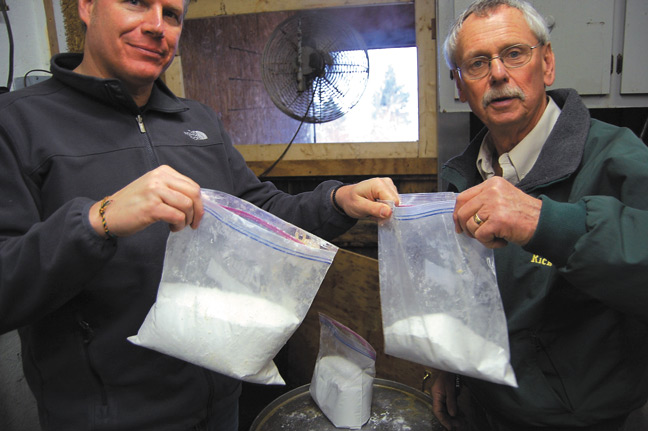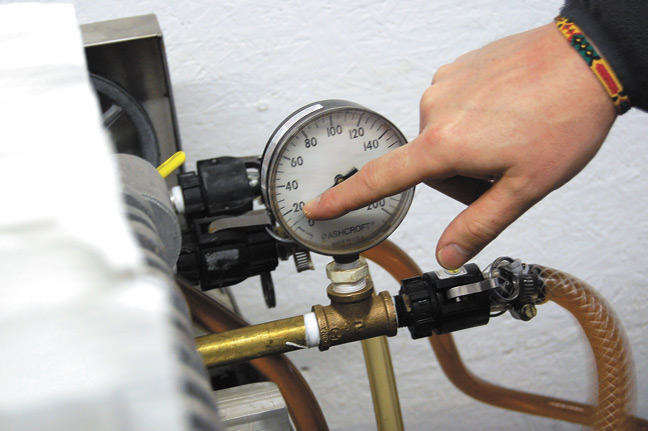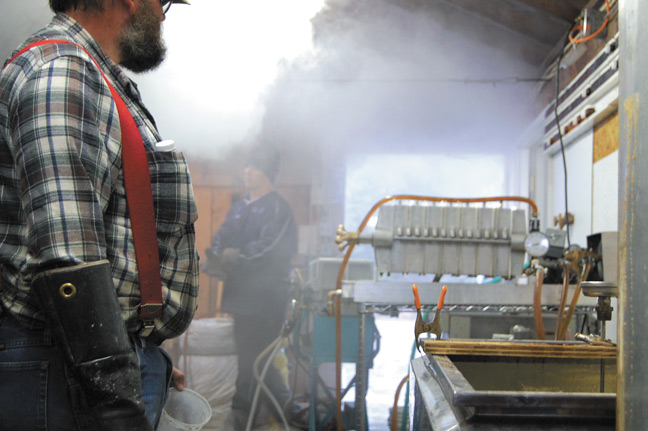Sap & Syrup
Filtering and D.E. changes make for easier canning
Filter expert teams up with sugarmaker to take the pain out of the press
By PETER GREGG | JANUARY 2017
WESTFORD, N.Y.—A couple years ago, sugarmaker Rick Newman was sitting around a table with a group of other sugarmakers who serve on the Cornell Maple Advisory Committee, and he surmised that filtering was becoming more of a problem at his sugarhouse and that maybe it was an issue worth exploring.
He got an unanimous consent.
“Everyone on the committee was having a concern about filtering,” said Newman, a passionate sugarmaker who owns 16,000-tap Breezie Maples Farm in Westford, N.Y., located deep in the Catskill Mountains. “Some of us were saying that syrup wasn’t tasting the same. We started wondering if maybe if it was the DE.”
By that he meant Diatomaceous earth, the filter aid used by most sugarmakers to help syrup pass through filter presses.
DE consists of the fossilized remains of a type of hard-shelled algae. Because it has a high porosity, composed of microscopically small, hollow particles, it makes for an effective filtration aid.
That is, if it’s used correctly.
Newman and the committee were questioning whether too fine a DE was taking out too many particles, affecting flavor. Also at issue is big bulk syrup buyers have been deducting for syrup not properly filtered.
Plus, he and the committee figured, there has to be a better methodology in filtering syrup through a press that could make it less of a hassle.
“If there’s one thing I dread the most, it’s the filter press,” Newman said.
With what he says is very little industry expertise available on filtering, Newman volunteered to the committee to reach outside the maple industry for answers.
“All we have as far as information about filtering comes from ‘diner talk’ passed around from sugarmaker to sugarmaker,” Newman said, during an interview and tour with The Maple News. “I figured there’s got to be a formula.”
After a Google search and a few phone calls, he found Dan Crawford, a filtration expert in Greenwich, N.Y.
With nearly 20 years of hard-core industrial filtering experience under his belt, Crawford had an ideal background for taking on the filtering problems at Newman’s sugarhouse.
It didn’t take long to determine and recommend some dramatic fixes.
After a series of visits, Crawford came up with a new filtering step and developed a specialized formula of Diatomaceous earth to make Newman’s syrup filter faster and easier, taking the pain out of what most agree is the worst task in the sugarhouse.
The results have been a huge breakthrough, Newman says.
Crawford first advised Newman to change the steps in adding DE during the filtering and canning process.
Like most sugarmakers, Newman and his filtering staffer Rich Terrell were simply adding a couple of scoops of DE into the filter tank and walking away—until the press blew.
Crawford advised to instead add a specific amount of DE in relation to the size of his filter press for what he calls the “pre-coat.” Crawford says sugarmakers should add 1.5 pounds of DE per cubic foot in the filter press for each run.
Crawford then told Newman to add a critical step to the filtering process—body feed.
He said DE needs to be added regularly during the entire filtering run, not just the beginning.
This body feed method Crawford says prevents clogging and gumming up of the filter sheets, leading to fewer press breakdowns and sheet changes.
And what a difference it makes, according to Newman.
“Before we always had to break down the press like a NASCAR pitstop halfway through filling a barrel,” Newman joked. “Now it’s total relaxation. Just wait for the barrel to fill.”
Crawford also came up with a new formulation of DE, specific for the maple industry, that also dramatically eases the filtering process. The mixture is more course, allowing for ease of syrup flow while still getting clarity.
“We determined that the DE commonly used in maple was too fine,” Crawford said. “It doesn’t need to be. For maple, we only need to be filtering for bigger size particles so that the end product is clear to the naked eye.”
In the end, a courser grade of DE may also lead to better tasting syrup.
“Everything we’ve made this year has tasted terrific,” Newman said. “I have to believe that this will all make flavor better.”
Certainly, the filter process is better.
Newman said that by adding the body feed step and using Crawford’s new DE formulation, he is now getting a full three barrels of syrup through the press before a breakdown and paper change. He used to get only a half a barrel through.
During his filter runs, Newman’s filter man Terrell regularly stirred in scoopfuls of DE as part of the body feed with the filter press happily humming away.















